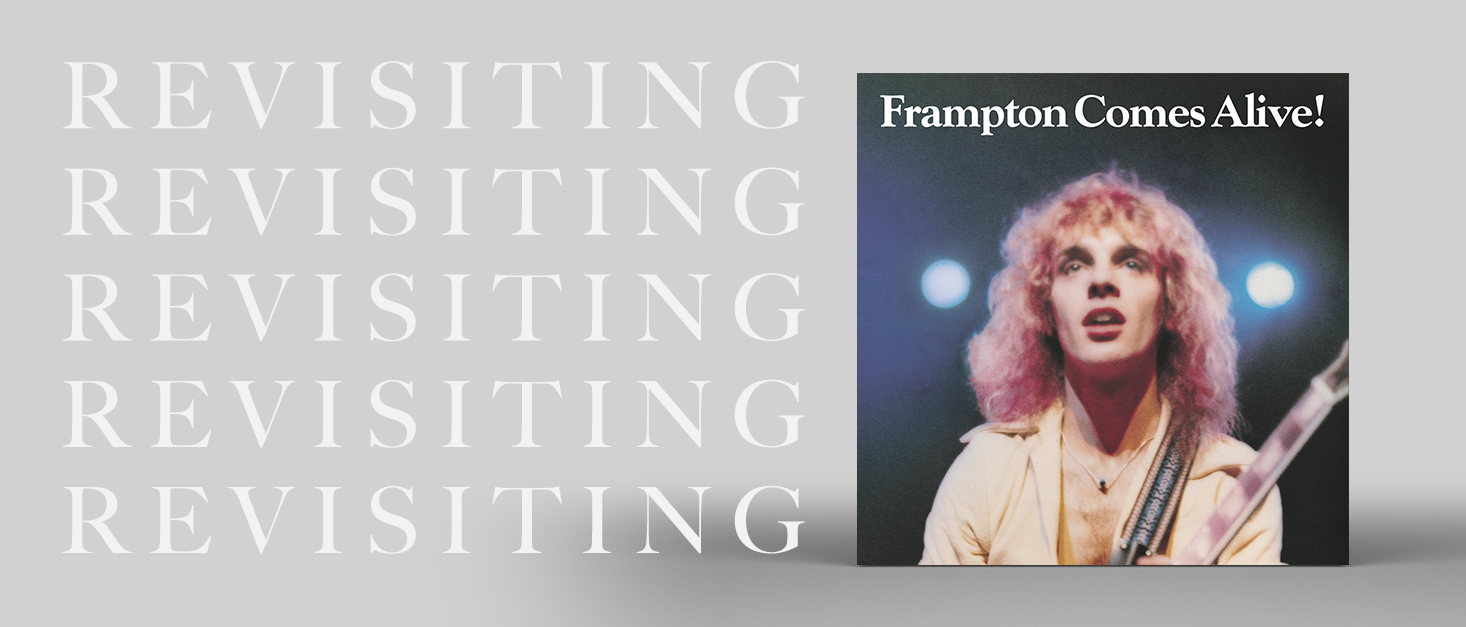Live albums are often viewed as the poor relations of studio recordings. This was especially true during the 1970s, when they were regularly released simply to fulfil artists’ contractual obligations to labels.
In 1976, however, Peter Frampton challenged this notion with the release of Frampton Comes Alive! Recorded during his 1975 US tour, it showed that live records could be just as compelling as studio releases, with the right performances and the right approach to production. The album was a huge commercial success, going eight times Platinum in the US, and its singles could be heard ringing out from transistor radios for months on end following its release.
While his music dominated the charts, Frampton remained something of an enigma. In terms of his public profile, he was no Mick Jagger or Rod Stewart. The quiet, self-effacing artist from Beckenham failed to capture the attention of the British music press, perhaps because he wasn’t edgy, outspoken or eccentric enough – yet huge numbers of music fans from across the Western world turned out to purchase his first live double album.
Frampton Comes Alive! offered 78 minutes of tuneful, West Coast US-style rock. At the time, critics called it formulaic and ‘assembly-line’, and there’s perhaps a grain of truth in this. There are no clever twists or groundbreaking moments, but each of its songs are brilliantly delivered.
Most live albums from the 1970s aimed to present a smattering of ‘greatest hits’ in a new and fresh context, while capturing a more spontaneous ‘live’ feel not found on studio recordings. Frampton Comes Alive! excelled at this. It also avoided one of the major pitfalls of rock albums from the era. There are no watered-down versions of studio releases here – instead, Frampton’s songs are enhanced, rather than diluted.
Frampton Comes Alive! never fails to be sunny and uplifting – a soft rock soundtrack to life’s good times. It has a propulsive, positive feel that is all about forward movement, and celebrating the moment. Occasionally, it pauses for a moment and reflects on life’s travails, but soon enough it’s back on the road, driving fast.
Perhaps this is what prompted some of the rock cognoscenti of the era to dismiss the album’s charms – Pink Floyd’s Wish You Were Here it is not. Frampton hasn’t got time to ponder life’s complexities when the sun is shining, and life is there to be lived.
There’s not a bad song on Frampton Comes Alive! Its hits are well known to anyone who was around in the 70s, and include ‘Show Me the Way’, ‘Baby, I Love Your Way’ and ‘Do You Feel Like We Do’. All reached the Top 15 in the US, but the album performed much better, spending ten weeks at No.1. This speaks to the fact that Frampton Comes Alive! works best as a whole, something to play from start to finish. The buying public obviously thought so too, as it has gone on to become one of the best selling live albums in history, with estimated sales of 11 million worldwide. It remained in the charts for 97 weeks after its release, and reached number 14 on Billboard's 1977 year-end album chart.
Crucial to capturing the raw, intuitive feel of Frampton Comes Alive! is its excellent recording quality. At the time of the album’s release, studio technology was fast advancing but still relatively limited. Doing a high quality live album bypassed this to an extent: most of it was captured on a 16-track analogue tape recorder running at 15 inches per second – half the speed of what was then regarded as state-of-the-art. Dolby A noise reduction was used, but aside from this, the music sounds relatively unprocessed. The recording process doesn’t in any way impinge on the spontaneity of the live event: the album’s producer simply knitted together the best performances from four shows at three different concert venues: San Francisco’s Winterland Ballroom, New York’s SUNY Plattsburgh, and the Long Island Arena.
This relatively light touch – where the producer is fairly ‘hands off’ – is a gift for audiophiles, and regular rock fans also appreciate it as a fresh and dynamic recording. The smooth and subtly warm sounding analogue master also captured the timbre of vocals and instruments beautifully. Frampton’s own 1954 Gibson Les Paul Custom electric guitar is exquisite; richly textured, with loads of attack. He uses it to great effect, with joyous solos and great riffs packing every song. It works closely with his gutsy vocals, which sound far closer to California than Kent. The music is bolstered by strummed acoustic guitars, keyboards, drums and bass guitar, all of which are fulsome and expressive.
Very little post-production work was done, which was unusual for the time. Only a few studio recorded sections were spliced in, and these weren’t used to bolster the sound, but to make up for technical faults such as occasional failed microphone connections. This lets the excellent musicianship shine through, from Bob Mayo’s great rhythm guitar and Fender Rhodes piano work, to Stanley Sheldon’s bouncy bass guitar playing. John Siomos is also fantastic on drums, providing a slick backing to the musical goings-on without ever stealing focus.
From the catchy singles to slickly delivered classics like ‘Somethin's Happening’, ‘Wind of Change’ and ‘Jumpin' Jack Flash’, this is a great work, if you’re a fan of straight-down-the-line, unpretentious rock music that doesn’t take itself too seriously, or try to change the world. The original A&M CD release is good, and the Bob Ludwig remaster done for the 25th Anniversary Edition is better still.
Just two years after the album’s release, Peter Frampton had a near-fatal car crash. He later struggled with drug abuse, and whilst he eventually recovered and moved on, commercial success subsequently eluded him. This classic album represents a 25-year-old musician at his absolute peak, and chronicles a happy time where rock music seemingly conquered all.

